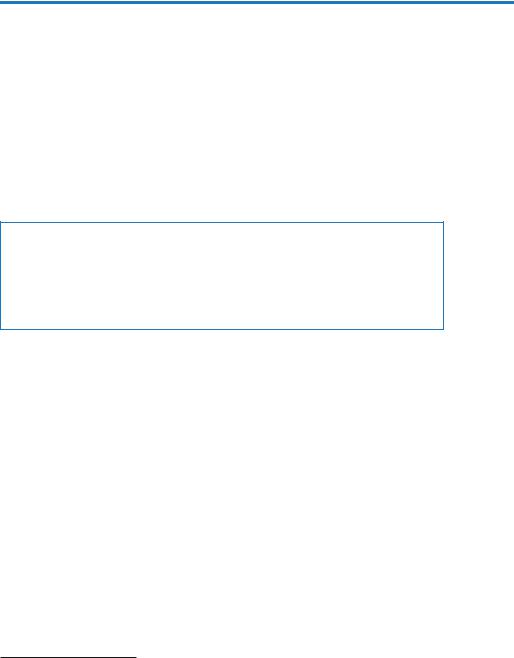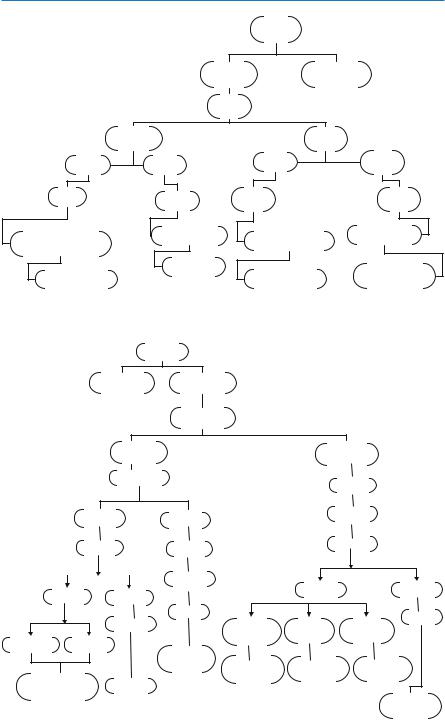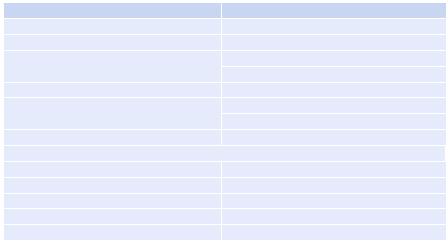
- •ICU Protocols
- •Preface
- •Acknowledgments
- •Contents
- •Contributors
- •1: Airway Management
- •Suggested Reading
- •2: Acute Respiratory Failure
- •Suggested Reading
- •Suggested Reading
- •Website
- •4: Basic Mechanical Ventilation
- •Suggested Reading
- •Suggested Reading
- •Websites
- •Suggested Reading
- •Websites
- •7: Weaning
- •Suggested Reading
- •8: Massive Hemoptysis
- •Suggested Reading
- •9: Pulmonary Thromboembolism
- •Suggested Reading
- •Suggested Reading
- •Websites
- •11: Ventilator-Associated Pneumonia
- •Suggested Readings
- •12: Pleural Diseases
- •Suggested Reading
- •Websites
- •13: Sleep-Disordered Breathing
- •Suggested Reading
- •Websites
- •14: Oxygen Therapy
- •Suggested Reading
- •15: Pulse Oximetry and Capnography
- •Conclusion
- •Suggested Reading
- •Websites
- •16: Hemodynamic Monitoring
- •Suggested Reading
- •Websites
- •17: Echocardiography
- •Suggested Readings
- •Websites
- •Suggested Reading
- •Websites
- •19: Cardiorespiratory Arrest
- •Suggested Reading
- •Websites
- •20: Cardiogenic Shock
- •Suggested Reading
- •21: Acute Heart Failure
- •Suggested Reading
- •22: Cardiac Arrhythmias
- •Suggested Reading
- •Website
- •23: Acute Coronary Syndromes
- •Suggested Reading
- •Website
- •Suggested Reading
- •25: Aortic Dissection
- •Suggested Reading
- •26: Cerebrovascular Accident
- •Suggested Reading
- •Websites
- •27: Subarachnoid Hemorrhage
- •Suggested Reading
- •Websites
- •28: Status Epilepticus
- •Suggested Reading
- •29: Acute Flaccid Paralysis
- •Suggested Readings
- •30: Coma
- •Suggested Reading
- •Suggested Reading
- •Websites
- •32: Acute Febrile Encephalopathy
- •Suggested Reading
- •33: Sedation and Analgesia
- •Suggested Reading
- •Websites
- •34: Brain Death
- •Suggested Reading
- •Websites
- •35: Upper Gastrointestinal Bleeding
- •Suggested Reading
- •36: Lower Gastrointestinal Bleeding
- •Suggested Reading
- •37: Acute Diarrhea
- •Suggested Reading
- •38: Acute Abdominal Distension
- •Suggested Reading
- •39: Intra-abdominal Hypertension
- •Suggested Reading
- •Website
- •40: Acute Pancreatitis
- •Suggested Reading
- •Website
- •41: Acute Liver Failure
- •Suggested Reading
- •Suggested Reading
- •Websites
- •43: Nutrition Support
- •Suggested Reading
- •44: Acute Renal Failure
- •Suggested Reading
- •Websites
- •45: Renal Replacement Therapy
- •Suggested Reading
- •Website
- •46: Managing a Patient on Dialysis
- •Suggested Reading
- •Websites
- •47: Drug Dosing
- •Suggested Reading
- •Websites
- •48: General Measures of Infection Control
- •Suggested Reading
- •Websites
- •49: Antibiotic Stewardship
- •Suggested Reading
- •Website
- •50: Septic Shock
- •Suggested Reading
- •51: Severe Tropical Infections
- •Suggested Reading
- •Websites
- •52: New-Onset Fever
- •Suggested Reading
- •Websites
- •53: Fungal Infections
- •Suggested Reading
- •Suggested Reading
- •Website
- •55: Hyponatremia
- •Suggested Reading
- •56: Hypernatremia
- •Suggested Reading
- •57: Hypokalemia and Hyperkalemia
- •57.1 Hyperkalemia
- •Suggested Reading
- •Website
- •58: Arterial Blood Gases
- •Suggested Reading
- •Websites
- •59: Diabetic Emergencies
- •59.1 Hyperglycemic Emergencies
- •59.2 Hypoglycemia
- •Suggested Reading
- •60: Glycemic Control in the ICU
- •Suggested Reading
- •61: Transfusion Practices and Complications
- •Suggested Reading
- •Websites
- •Suggested Reading
- •Website
- •63: Onco-emergencies
- •63.1 Hypercalcemia
- •63.2 ECG Changes in Hypercalcemia
- •63.3 Superior Vena Cava Syndrome
- •63.4 Malignant Spinal Cord Compression
- •Suggested Reading
- •64: General Management of Trauma
- •Suggested Reading
- •65: Severe Head and Spinal Cord Injury
- •Suggested Reading
- •Websites
- •66: Torso Trauma
- •Suggested Reading
- •Websites
- •67: Burn Management
- •Suggested Reading
- •68: General Poisoning Management
- •Suggested Reading
- •69: Syndromic Approach to Poisoning
- •Suggested Reading
- •Websites
- •70: Drug Abuse
- •Suggested Reading
- •71: Snakebite
- •Suggested Reading
- •72: Heat Stroke and Hypothermia
- •72.1 Heat Stroke
- •72.2 Hypothermia
- •Suggested Reading
- •73: Jaundice in Pregnancy
- •Suggested Reading
- •Suggested Reading
- •75: Severe Preeclampsia
- •Suggested Reading
- •76: General Issues in Perioperative Care
- •Suggested Reading
- •Web Site
- •77.1 Cardiac Surgery
- •77.2 Thoracic Surgery
- •77.3 Neurosurgery
- •Suggested Reading
- •78: Initial Assessment and Resuscitation
- •Suggested Reading
- •79: Comprehensive ICU Care
- •Suggested Reading
- •Website
- •80: Quality Control
- •Suggested Reading
- •Websites
- •81: Ethical Principles in End-of-Life Care
- •Suggested Reading
- •82: ICU Organization and Training
- •Suggested Reading
- •Website
- •83: Transportation of Critically Ill Patients
- •83.1 Intrahospital Transport
- •83.2 Interhospital Transport
- •Suggested Reading
- •84: Scoring Systems
- •Suggested Reading
- •Websites
- •85: Mechanical Ventilation
- •Suggested Reading
- •86: Acute Severe Asthma
- •Suggested Reading
- •87: Status Epilepticus
- •Suggested Reading
- •88: Severe Sepsis and Septic Shock
- •Suggested Reading
- •89: Acute Intracranial Hypertension
- •Suggested Reading
- •90: Multiorgan Failure
- •90.1 Concurrent Management of Hepatic Dysfunction
- •Suggested Readings
- •91: Central Line Placement
- •Suggested Reading
- •92: Arterial Catheterization
- •Suggested Reading
- •93: Pulmonary Artery Catheterization
- •Suggested Reading
- •Website
- •Suggested Reading
- •95: Temporary Pacemaker Insertion
- •Suggested Reading
- •96: Percutaneous Tracheostomy
- •Suggested Reading
- •97: Thoracentesis
- •Suggested Reading
- •98: Chest Tube Placement
- •Suggested Reading
- •99: Pericardiocentesis
- •Suggested Reading
- •100: Lumbar Puncture
- •Suggested Reading
- •Website
- •101: Intra-aortic Balloon Pump
- •Suggested Reading
- •Appendices
- •Appendix A
- •Appendix B
- •Common ICU Formulae
- •Appendix C
- •Appendix D: Syllabus for ICU Training
- •Index

Drug Abuse |
70 |
|
|
Omender Singh and Prashant Nasa |
|
A 38-year-old male known alcohol abuser, chronic smoker, and IV drug abuser came to the emergency department in inebriated state. On examination, he was cachectic, stuporous with bilateral pin-point pupils. There were multiple black erythematous patches on forearm with multiple injection marks. His pulse rate was 46/min and blood pressure was 82/60 mmHg, and on auscultation, there were bilateral crepts.
Substance abuse may be persistent or sporadic use of a drug / substance, inconsistent with or unrelated to acceptable medical practice. This subset of patients may present to the hospital with acute intoxication, withdrawal, or infectious and other chronic complications related to drug abuse. They have overall better prognosis as compared to other critically ill patients if diagnosed and managed timely.
Step 1: Initiate resuscitation
• Initial resuscitation should be done as mentioned in Chap. 78.
Airway
•Management of airways is very important in poisoning. When intubation is necessary, rapid sequence induction is indicated using short-acting paralytic agents.
•Urine toxicology screening should be obtained before administering any sedatives or hypnotics.
O. Singh, M.D., F.C.C.M. (*) • P. Nasa, M.D., F.N.B.
Department of Critical Care Medicine, Max Superspeciality Hospital, New Delhi, India
e-mail: omender.critical@gmail.com
R. Chawla and S. Todi (eds.), ICU Protocols: A stepwise approach, |
559 |
DOI 10.1007/978-81-322-0535-7_70, © Springer India 2012 |
|

560 |
O. Singh and P. Nasa |
|
|
Breathing
•A patient’s oxygenation status can be monitored with a bedside pulse oximeter.
•Give oxygen by the nasal cannula or facemask to maintain SpO2 more than 95%.
•The patient should be started on assisted ventilation if unable to maintain oxygenation or ventilation.
Circulation
•Monitor pulse and blood pressure and do ECG.
•Obtain a good peripheral line and start intravenous fluids.
Step 2: Initial assessment
•This subset of patients may present to the hospital with acute intoxication, withdrawal, or infectious and other chronic complications related to drug abuse. The drugs of abuse can be classified into major groups (Table 70.1)
The initial evaluation of these patients has multiple physical, social, emotional,
and medicolegal issues that should be addressed.
History
•Complete and focused history should be taken from the patient, family, accompanying physician, or police, as mentioned in Chap. 68.
•Do detailed examination (Fig. 70.1, 70.2):
–Once the patient is stable, a more comprehensive physical and systemic examination should be performed.
–Serial examinations are even more important to assess dynamic change in clinical appearance.
–The systematic neurological evaluation is particularly important, in patients with altered mental status. Alert/verbal/painful/unresponsive scale (AVPU) is a simple rapid method of assessing consciousness in most poisoned patients.
Table 70.1 Classification of drugs of abuse
Group |
Commonly abused drugs |
Cannabinoids |
Hashish, ganja, marijuana |
Opioids |
Opium, heroin, morphine, fentanyl, codeine, oxycodone |
Stimulants |
Amphetamines, cocaine, MDMA (ecstasy), nicotine |
Hallucinogens |
Lysergic acid diethylamide, mescaline |
Dissociative anesthetics |
Ketamine, phencyclidine analogs |
Depressants |
Barbiturates, nonbarbiturates (benzodiazepines, gamma- |
|
hydroxybutyrate, antihistaminics) |
Others |
Alcohol, anabolic steroids, dextromethorphan |
Step 3: Diagnosis by toxidromic approach
The signs and symptoms of drugs of abuse are organized around the activity of six neurotransmitters (Table 70.2), with this activity being sufficiently unique to permit rapid identification of the specific drug responsible for a given clinical situation.

70 Drug Abuse |
|
|
|
|
561 |
|
|
|
Mood |
|
|
|
|
|
Calm |
Excited |
|
|
|
|
(see below) |
||
|
|
|
|
||
|
|
Through |
|
|
|
|
Not psychotic |
|
Psychotic |
|
|
Pupils, |
|
Pupils, |
Constricted |
|
Dilated |
Constricted |
|
Dilated |
|
|
|
Skin |
|
Skin |
Skin |
|
Skin |
|
|
|
|
|
|
Diaphoretic Warm, |
|
Dry, warm |
Diaphoretic Warm, |
Dry, warm Flushed |
|
|
Not flushed |
||||
not flushed |
|
Flushed |
|
||
|
|
|
|||
|
|
Opiate |
|
|
|
|
|
Intoxication |
|
|
Stimulant withdrawal |
Sedative / tranquilizer |
|
Stimulant Intoxication |
|||
|
intoxication |
||||
Fig. 70.1 Algorithm for the diagnosis of drug intoxication and withdrawal |
|||||
|
|
Mood |
|
|
|
|
Calm |
Excited |
|
|
|
|
|
Through |
|
|
|
|
Not Psychotic |
|
Psychotic |
||
|
Pupils |
|
|
Pupils |
|
|
|
|
|
|
|
Constricted |
|
|
Dilated |
||
Dilated |
|
Diapho |
|||
Skin |
|
Skin |
|
|
Skin |
|
|
|
|
||
|
|
Dry, cool |
|
|
|
Diaphoretic |
Dry, cool |
|
|
Diaphoretic |
Dry, warm |
|
|
|
|
||
|
|
Flushed |
|
|
Flushed |
|
Not flushed |
|
|
||
|
Warm |
Warm |
Cold |
||
|
|
|
|||
Warm, flushed Cool, flushed |
|
not flushed |
Flushed |
Not flushed |
|
|
|
|
|
||
|
|
Chronic |
|
|
|
|
|
withdrawal |
Not Tranquilizer |
Dissociative |
Psychedelic |
Opiate withdrawal |
|
|
stimulant |
withdrawal |
intoxication |
Sedative |
|
|
|
|
|
Stimulant intoxication |
|
|
|
|
|
|
|
|
|
|
|
|
|
|
|
|
Acute |
|
|
|
|
|
intoxication |
Fig. 70.2 Algorithm for the diagnosis of drug intoxication and withdrawal (continued)

562 |
O. Singh and P. Nasa |
|
|
Table 70.2 Specific treatment for intoxication, overdose, and withdrawal based on the affected neurotransmitter
Neurotransmitter intoxication and overdose
Acetylcholine (anticholinergic)
b-Endorphin
Dopamine
GABA
Norepinephrine
Serotonin
Withdrawal
b-Endorphin
Dopamine
GABA
Norepinephrine
Serotonin
GABA gamma-aminobutyric acid
•Based on history and examination, it may be possible to define a constellation of signs and symptoms or toxidromes, which may help in diagnosing the unknown poison. Common toxidromes are listed in Chap. 69.
Step 4: Diagnose common drug abuse
A.Alcohol
•Acute effects:
–CNS depressant.
–In low doses, alcohol depresses inhibitory centers and resultant disinhibition (out-of-character activities).
–At higher doses, alcohol inhibits excitatory centers.
•Signs of chronic alcohol abuse:
–Gastrointestinal—cirrhosis of the liver, peptic ulcer disease, gastritis, pancreatitis, and carcinoma
–Cardiovascular—hypertension, cardiomyopathy, atrial fibrillation (“holiday heart syndrome”)
–Neurological—peripheral neuropathy leading to ataxia, Wernicke encephalopathy, Korsakoff psychosis, and structural changes in the brain leading to dementia
–Immunologic—suppression of neutrophil function and cell-mediated immunity
–Endocrine—in males, increase in estrogen and decrease in testosterone, leading to impotence, testicular atrophy, and gynecomastia
–Psychiatric—depression or anxiety disorders
70 Drug Abuse |
563 |
|
|
B.Opiates
•Acute intoxication—decreased respiratory rate and pinpoint pupils, with complications including noncardiogenic pulmonary edema and respiratory failure.
•Complications of chronic abuse are primarily infectious and include skin abscess at an injection site, cellulitis, mycotic aneurysms, endocarditis, talcosis, HIV, and hepatitis.
C.Cocaine
Cocaine may be smoked, inhaled, used topically, or injected:
•Acute cocaine intoxication may present with agitation, paranoia, tachycardia, tachypnea, hypertension, and diaphoresis.
•Complications of acute and chronic use can include myocardial ischemia or infarction, stroke, pulmonary edema, and rhabdomyolysis.
D.Amphetamines
Acute intoxication with amphetamines presents with signs of sympathetic nervous system stimulation, tachycardia, hypertension, anorexia, insomnia, and occasionally seizures.
E.Hallucinogens
•Different hallucinogens present with a variety of organ system effects.
•Phencyclidine (PCP) has been known to cause muscle rigidity, seizures, rhabdomyolysis, and coma.
•Anticholinergics have been associated with delirium, supraventricular tachycardia, hypertension, and seizures.
Other hallucinogens (e.g., lysergic acid diethylamide, peyote, marijuana, and nutmeg) rarely cause significant physical complications.
Step 5: Send investigations
A basic metabolic panel should be obtained in all suicidal poisoned patients:
•Complete blood count
•Serum electrolytes
•Blood urea nitrogen, creatinine
•Liver functions tests
•Blood glucose, bicarbonate level
•Arterial blood gases
•ECG
•Echocardiography
Special investigations:
•Urine toxicology screening: In the patient with acute intoxication, urine screening for substances of abuse and a blood or breath alcohol level may be considered, but these generally do not alter management. Urine toxicology screening is needed for the following:
–Amphetamines
–Barbiturates
–Benzodiazepines
564 |
O. Singh and P. Nasa |
|
|
–Cannabinoids
–Cocaine
–Opioids
–Phencyclidine
•Caution: A single negative urine toxicology screening or urine immunoassay is not reliable, and repeat tests should be done after a few hours especially if clinical suspicion is high:
–Blood toxicology profile—if available.
–If the patient is a female of child-bearing age, a pregnancy test is essential.
–Serum ethanol level, the anion gap, serum osmolality, and osmolal gap should be performed for alcohol intoxication.
–A CT scan of the head is advised—if altered mental status is not explained or in the presence of new focal neurological deficit.
Step 6: General management
•The general principle of management of patients with suspected drug overdose or withdrawal is supportive and includes standard resuscitative measures, as mentioned in Chap. 68.
•Once the patient has been stabilized, the physician must consider how to minimize the bioavailability of toxin not yet absorbed, which antidotes (if any) to administer, and what other measures should be undertaken to enhance elimination.
•After initial resuscitation, use the specific antidote when available.
The management of acute intoxication and withdrawal again will depend on the
particular neurotransmitters involved (Table 70.2).
Step 7: Manage as per specific class
A.Dissociative drugs
•Acute intoxication: Haloperidol, a presynaptic dopamine antagonist, is useful for blocking significant symptoms of dissociative intoxication.
•Dose: 1 mg IV every 15–20 min up to maximum 10 mg can be given orally or intramuscularly, too.
Alternative to haloperidol is risperidone.
•Chronic intoxication: Desipramine for postwithdrawal depression.
B.Opiates
•Specific antidote (naloxone, naltrexone, naltrefene): Naloxone, at a dose of 0.1–0.4 mg or 0.01 mg/kg IV, may have to be repeated every 1–2 min.
•Naloxone should not be used in patients with chronic abuse as it can precipitate seizures or withdrawal.
•Withdrawal: Methadone is the drug of choice, but not easily available. Clonidine orally/Ryle’s tube 17 mg/kg/day in three to four doses can be used.
C.Hallucinogens
•Acute intoxication: Benzodiazepines (midazolam, diazepam, alprazolam) are the drug of choice.
•Withdrawal: Fluoxetine can be given orally.
